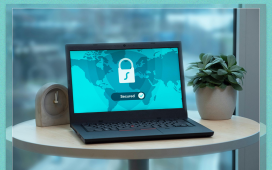IT hygiene is a security best practice that ensures that digital assets in an organization’s environment are secure and running properly. Good IT hygiene includes vulnerability management, security configuration assessments, maintaining asset and system inventories, and comprehensive visibility into the activities occurring in an environment.
As technology advances and the tools used by cybercriminals and cybersecurity professionals evolve, the strategies used to carry out cyber attacks differ based on their complexity and uniqueness. Threat actors continuously target organizations practicing poor IT hygiene to exploit known security weaknesses and human error. Security administrators can defend against cyberattacks by implementing good IT hygiene practices like whitelisting programs, keeping systems up to date, and more.
Gaining complete visibility into the IT assets is fundamental to developing an effective security strategy. The emergence of shadow IT, like rogue assets, software, or user accounts, can create a blind spot that threat actors can use as an attack vector. IT hygiene practices address the issue of visibility, ensuring IT assets are adequately protected therefore reducing the attack surface.
Common problems faced by organizations practicing poor IT hygiene
The following are some of the issues organizations face as a result of poor IT hygiene:
- Exposure to security breaches. They are costly and damaging to businesses and organizations reputation. . Threat actors can exploit the lack of appropriate security controls, like poor configuration management, to compromise an organization’s security.
- Vulnerability to the loss of critical data in a cyberattack or other disasters due to lack of backup. This could affect the availability of information systems which impacts the organization’s operations.
- Hidden malicious activities due to lack of visibility of critical endpoint processes and operating system information. Threat actors can exploit legitimate processes to run malicious activities without being detected.
- Vulnerability to attacks due to out-of-date applications, operating systems, and hardware.
- Incomplete protection and security. Organizations using security solutions that do not offer comprehensive monitoring and response capabilities are at greater risk of exposure and cyberattacks.
Why is IT hygiene important?
IT hygiene is critical for maintaining the security and resilience of an organization’s IT infrastructure. By adhering to good IT hygiene practices, organizations can ensure the protection, performance, and reliability of their IT infrastructure while also complying with regulatory requirements and minimizing costs. IT hygiene is important as follows.
Firstly, organizations can significantly enhance their security posture by practicing good IT hygiene through comprehensive vulnerability and patch management. This practice ensures the protection of endpoints and applications from malicious attacks.
Furthermore, by maintaining good IT hygiene, organizations can effectively reduce their attack surface as they have greater visibility of all their IT assets.
Finally, adhering to IT good hygiene practices aids in meeting regulatory requirements and industry standards and saving costs. Proactive monitoring and response can assist organizations in avoiding legal sanctions and financial and reputational damage resulting from data breaches and cyberattacks.
How Wazuh helps improve IT hygiene
Wazuh is a free, open source security platform that offers unified XDR and SIEM capabilities. It helps provide security across workloads on cloud and on-premises environments. It provides a centralized view for monitoring, detecting, and alerting security events on monitored endpoints and cloud workloads.
This section highlights several Wazuh capabilities vital to keeping your network clean and secure.
1 —System inventory: IT hygiene begins with real-time visibility of digital assets in an environment and the events occurring in them. Real-time visibility includes an up-to-date inventory of assets and system. It involves instantly identifying risks, vulnerabilities, and misconfigurations across those assets. The Wazuh system inventory capability collects relevant information like hardware, operating systems, ports, packages, Windows updates, and network interfaces on monitored endpoints. This information is crucial to developing an effective IT hygiene practice that improves the overall security posture of an organization. For example, the system inventory data contains a list of open ports on endpoints which can aid security administrators in identifying and closing unnecessary ports, thereby reducing the attack surface.
| Figure 1: Wazuh dashboard showing inventory data of a monitored endpoint. |
2 — Security Configuration Assessment (SCA): This entails conducting an extensive analysis of security issues on monitored endpoints. It’s based on compliance standards to improve security posture. Best IT hygiene practices require security administrators to perform configuration assessments regularly to identify and remediate vulnerabilities and misconfigurations on endpoints. Security configuration assessments and endpoint hardening effectively reduce an organization’s attack surface.
The Wazuh SCA capability assesses system configurations and triggers alerts when these configurations do not meet secure system policies. Depending on the industry, IT hygiene ensures that endpoints comply with HIPAA, PCI DSS, NIST 800-53 compliance standards, and CIS benchmarks.
| Figure 2: Wazuh dashboard showing SCA report of a monitored endpoint. |
3 — Vulnerability management: This is a proactive and continuous process of identifying, prioritizing, and remediating vulnerabilities on endpoints. The vulnerability management process is crucial to maintain IT hygiene. The Wazuh Vulnerability Detector capability lets you discover security vulnerabilities in the operating system and applications installed on monitored endpoints. Security administrators can take necessary actions to remediate vulnerabilities and improve IT hygiene.
| Figure 3: Wazuh dashboard showing vulnerability report of a monitored endpoint. |
4 — Extended threat detection and automated response: This can help with IT hygiene by continuously monitoring and analyzing endpoint activities in an organization’s environment. This continuous monitoring ensures proactive detection and response to threats or malicious activities. With an XDR/SIEM solution, security teams can quickly identify and isolate infected endpoints, thereby preventing the spread of malware in their enterprise network. Wazuh helps organizations monitor and secure their IT infrastructure by providing comprehensive threat detection and automated response capabilities for endpoints. It helps to improve an organization’s IT hygiene practices by providing continuous monitoring, malware detection, incident response, and compliance capabilities.
Conclusion
In today’s ever-changing threat landscape, creating a good IT hygiene routine is essential to prevent cyber criminals from causing security breaches. By leveraging the capabilities of Wazuh, organizations can proactively detect and respond to security threats and maintain a robust cyber security posture.
Wazuh is a free, open source SIEM and XDR solution that offers comprehensive security for organizations. Wazuh improves an organization’s IT hygiene using several capabilities to alert administrators of vulnerabilities, suggest remediation steps, and respond to threats.
Wazuh has over 20 million annual downloads and extensively supports users through a constantly growing open source community.










